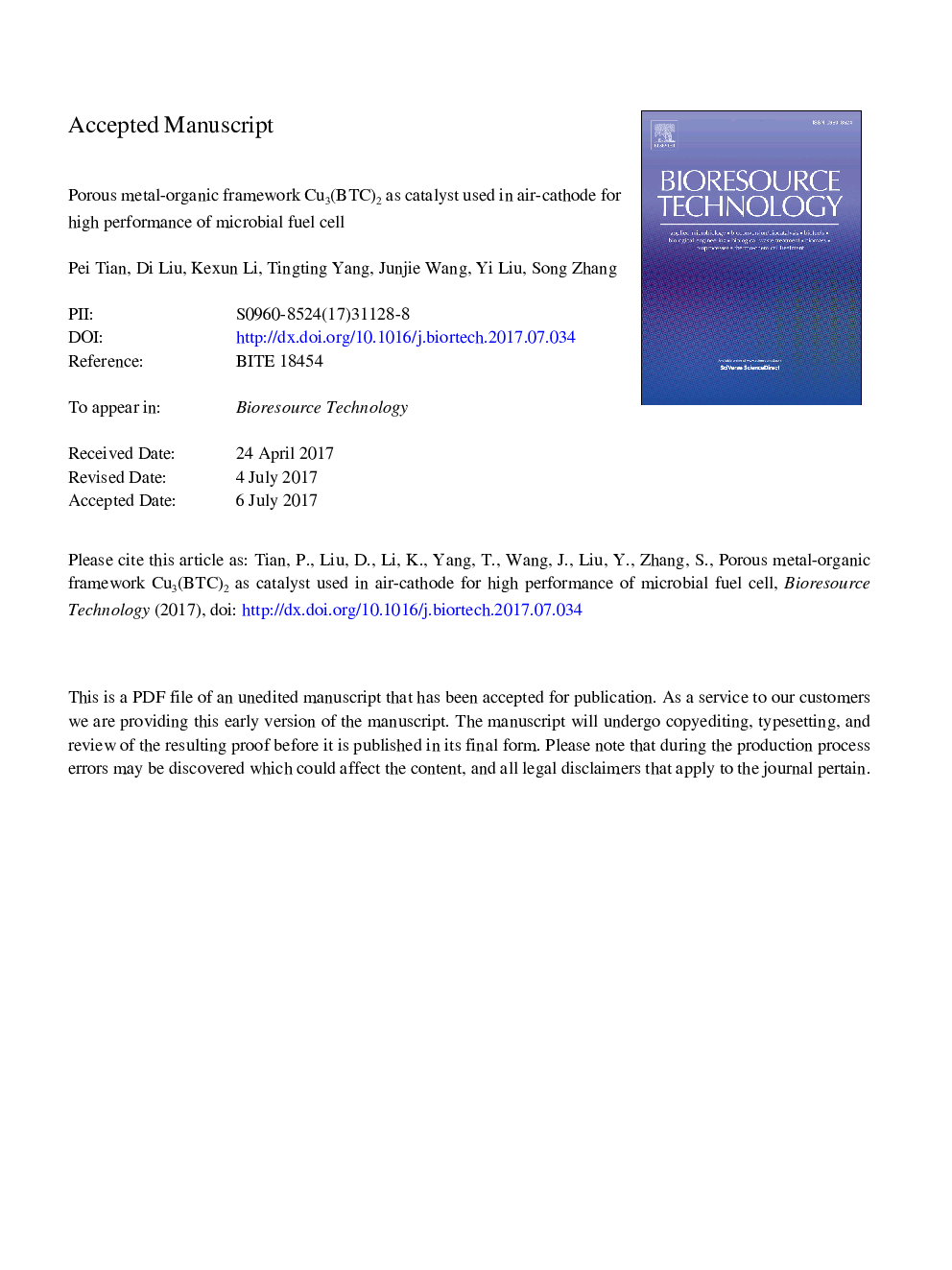| Article ID | Journal | Published Year | Pages | File Type |
|---|---|---|---|---|
| 4996574 | Bioresource Technology | 2017 | 29 Pages |
Abstract
Metal-organic framework Cu3(BTC)2, prepared by an easy hydrothermal method, was used as the oxygen-based catalyst in microbial fuel cell (MFC). The maximum power density of Cu3(BTC)2 modified air-cathode MFC was 1772 ± 15 mW mâ2, almost 1.8 times higher than the control. BET results disclosed high specific surface area of 2159.7 m2 gâ1 and abundant micropores structure. Regular octahedron and porous surface of Cu3(BTC)2 were observed in SEM. XPS testified the existence of divalent copper in the extended 3D frameworks, which importantly acted as the Lewis-acid sites or redox centers in ORR. Additionally, the total resistance decreased by 42% from 17.60 to 10.24 Ω compared with bare AC electrode. The rotating disk electrode test results showed a four-electron transfer pathway for Cu3(BTC)2, which was crucial for electrochemical catalytic activity. All the structural and electrochemical advantages make Cu3(BTC)2 a promising catalyst for ORR in MFC.
Related Topics
Physical Sciences and Engineering
Chemical Engineering
Process Chemistry and Technology
Authors
Pei Tian, Di Liu, Kexun Li, Tingting Yang, Junjie Wang, Yi Liu, Song Zhang,
